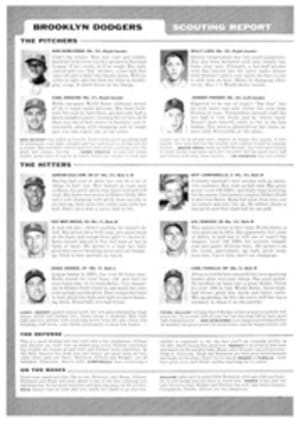
SI TESTS MG's RADICALLY NEW 'A' SERIES WHICH IS BEING INTRODUCED THIS WEEK AND FINDS THAT IT IS BETTER THAN THE CLASSIC T MODELS
Early this year, when MG withdrew the TF from production, there was a great deal of speculation over what would follow. In time it was learned that a new A-type series was being contemplated, but what kind of a car it was, what design and how it would stack up with previous models were questions which had to await the unveiling. This week, about three months behind their original schedule, MG officials are showing the new car publicly for the first time. I have driven the A and it is in every way superior to any model in the T series.
Without doubt, the outstanding fact about the A is its styling. With this series, MG is making a clean break with the outworn, boxlike, "classical" shape of the T models. In fact, the smooth contours and compound curves of its well-proportioned body are identical with that of this year's Le Mans MG, while the front end is inherited from the Phillips MG of Le Mans in 1951. Among its pleasing features are the high-grade finish on fender welts, door joints, upholstery, steering wheel (with spokes forming a shallow X), bumpers and windshield frame.
I first saw the car in July at the MG plant situated outside the picturesque old Berkshire town of Abingdon-on-Thames. General Manager John Thornley—the man who has done more for MG than anyone else since the late Cecil Kimber—provided me with a test car, and I set off along typical British winding roads.
It took me less than a mile to discover the excellence of the new MG. You sit low and deep in the comfortable seats, with plenty of elbow and leg room both for driver and passenger. Interior body width, door to door, is 48 inches, and a center armrest, nearly five inches wide, is standard equipment. Seat cushions are a generous 18 x 19 inches, with backs offering support just where it is needed. With the driver's seat fully back on its sliding rails, 24 inches of leg room is available. Luggage space too is adequate for a small sports car.
The handling qualities of the A-type are superb. Steering, clutch and gearbox are all positive and velvet-smooth, while the bigger Magnette brakes do a real stopping job. So far as I could discover, the car is viceless, even when thrown around turns. It gives warning of tail-slides and instantly answers helm and throttle. For a four-cylinder, small-displacement motor, it is extraordinarily flexible. Low is purely a starting gear; you can haul away from five mph in second, 15 in third and 20 in top without the least sign of distress or pinging, despite the fairly high compression ratio. Yet a fast downshift into third at 40 mph is tremendously useful when overtaking slower traffic, since maximum in third gear is around 70 mph. The engine revs easily to 6,000 rpm and beyond without valve crash. In two hours I drove 100 miles along winding, narrow, unfamiliar roads with absolute comfort and safety. That is how well the car performs.
There is only one snag, but to the MG enthusiast it will loom large. On sheer performance the new car is only fractionally better than the TF, despite an added five hp. Precisely, it is four-tenths of a second faster from zero to 30 mph, half a second faster to 50 mph and 1.4 seconds faster to 60. Maximum speed of 94 mph is about six mph higher and the biggest improvement seems to be in the 30-to 50-mph acceleration range. Whereas the TF took 6.1 seconds to go from 30 to 50 in second gear, the A takes only six seconds in third. Still, to be blunt, the A's pickup is only mediocre, and in its present form it is no match for several other production cars of similar displacement.
I discussed this with Thornley and his assistant, Geoffrey Iley. Both had anticipated my findings and their explanation was economic. To begin with, the new MG does not feature the Westlake-designed, double-port cylinder head used on the EX 182 Le Mans cars, which topped 117 mph on the long straight to Mulsanne. That particular head had vastly better breathing from both sides of the intake valves, inclined at 35°, which boosted the power output to between 82 and 90 hp. It seemed the logical head for the vast potential overseas markets of the new model, but Iley told me that despite a flood of telegrams and letters from MG Magnette owners wanting to buy the head, the company wouldn't include it because "production costs are such a serious obstacle at the moment." It seems the question of whether to make this cylinder head in quantities is under consideration by BMC (British Motor Corporation), of which the MG Car Company is a subsidiary; and if Thornley can sell top management the idea, he will do so.
Meanwhile, the A-type MG engine is derived from the BMC's B series power unit of Austin design. Indeed, it uses the same block as the Austin A50, Morris Oxford and MG Magnette. "Until last summer," Thornley explained, "the detail design of every Wolseley, Riley, Morris and MG was rigidly controlled by BMC, but during the past year the severity of this policy has been gradually relaxed, particularly with regard to the MG." Today the chief over-all requirement is that any new MG must utilize basic components already in production. (Hence the designation A, denoting the start of a new line of MGs built from available BMC parts, just as the original 1936 T type sprang from Wolseley and Morris components.
In Thornley's words, the new MG is a "bread and butter car," strictly for sports touring. Viewed in that light, with a projected $2,200 tag, it is wonderful value. But in my opinion MG designers missed the boat by not using the Le Mans head. With 82 hp under the hood, the new car would be transformed. It could top 100 mph in full touring trim and doubtless break 11 seconds from zero to 60 mph without trouble. Enthusiasts would gladly pay $200 more for the extra zip.
[originallink:10463391:42725]
PHOTO
CORNERING UNDER HAND of Writer Bentley, newly styled A-series MG with curved contours, shortened grille, bears slight resemblance to boxlike T of the past.
FOR WATKINS GLEN RESULTS TURN TO PAGE 4

